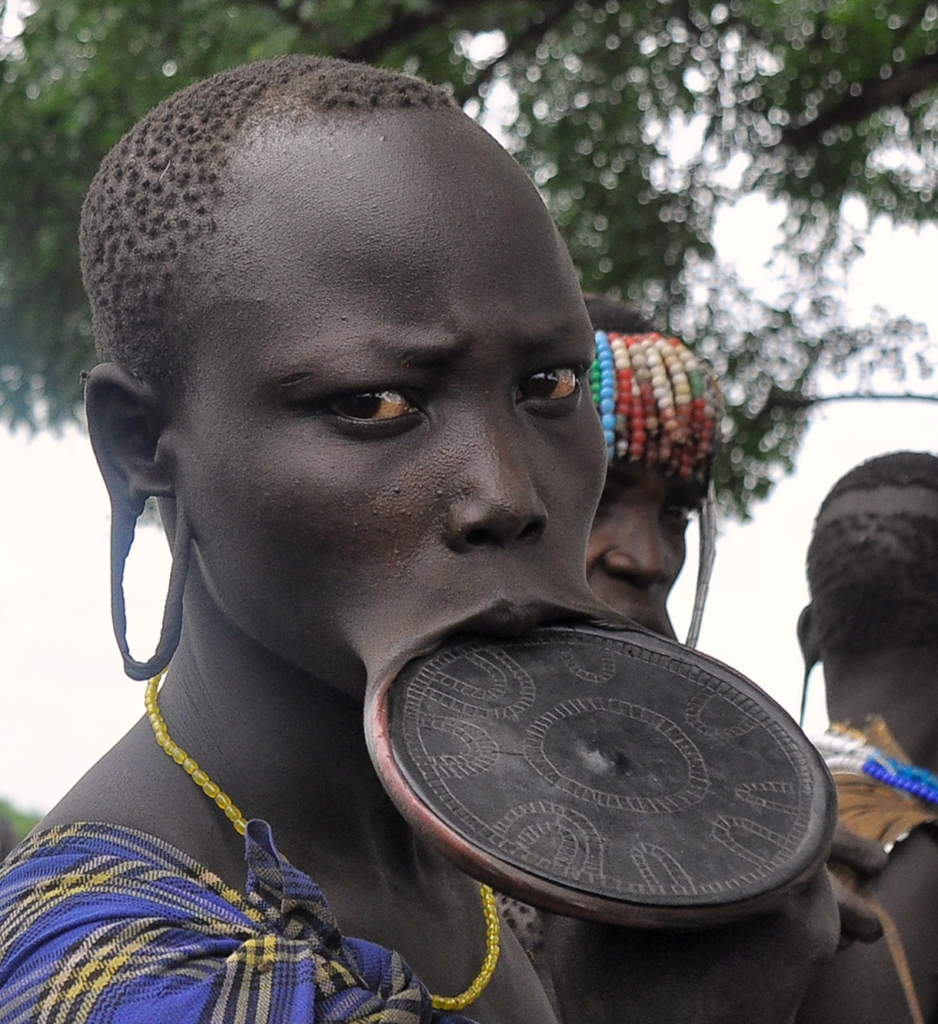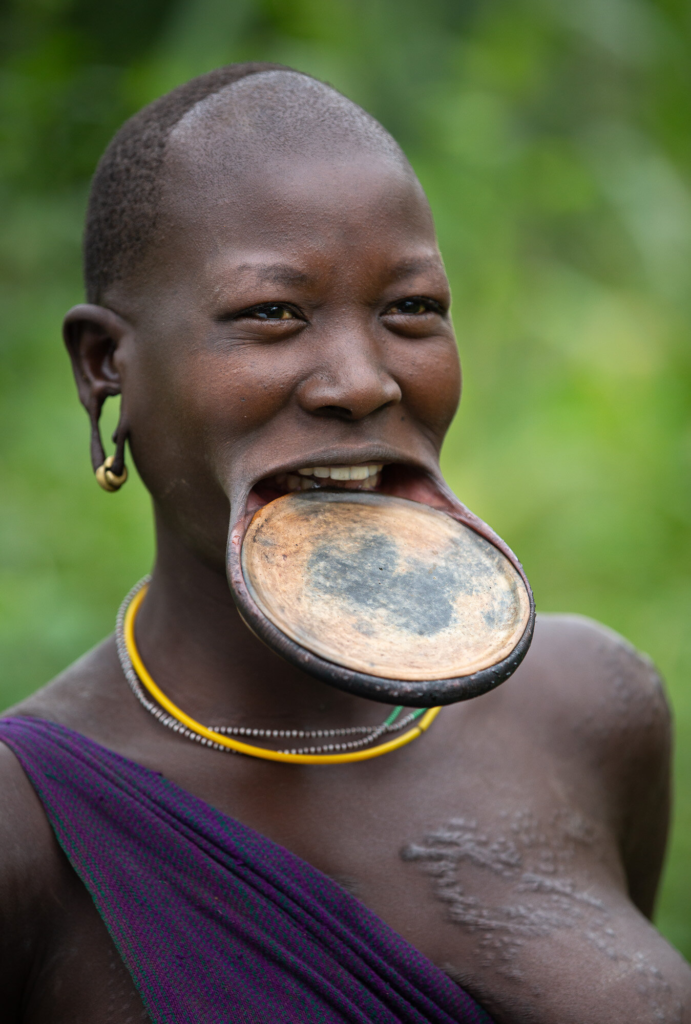African body modification is for cultural reasons and it holds great significance. Unlike in the West, where body modification is a matter of personal choice, these African oftens expected as a part of society.
These body Modification, like scarification, teeth sharpening, and lip plates, convey various messages about age, status, beliefs, and more. Let’s delve into these intriguing traditions.
Most Extreme African Body Modification Traditions List
1. Scarification: Marking Life’s Milestones






Scarification is a way for many West African tribes to mark important life stages like puberty and marriage. It’s like a unique language etched on the skin, telling a person’s story. Those who don’t participate in scarification might feel excluded from their tribe’s activities. It’s a powerful way to show belonging.
Today, scarification is becoming less common, mostly seen on elders. This change is due to concerns about HIV and social stigma. Interestingly, in Western societies, people willingly undergo surgery to enhance their appearance, while in Africa, scars are often hidden.
2. Teeth Sharpening: A Unique Tradition



Teeth sharpening embodies a transition into adulthood, a rite of passage for the Makonde, tribes in Congo, Central African Republic, and Gabon. This process symbolizes endurance and readiness for the challenges of adulthood. For other tribes, it is a customary expectation, an indelible mark of belonging.
In some regions, teeth sharpening takes on a spiritual dimension, endowing individuals with the essence of creatures like crocodiles, a testament to their inner strength.
3. Lip Plates of the Surma People: A Beauty Tradition



In the lower Omo River valley, the Mursi and Surma people embark on a transformative journey of lip stretching, a process commencing half a year to a year before marriage. The endeavor, starting around ages 15 to 18, involves the removal of bottom teeth to accommodate a wooden peg.
This peg evolves into larger counterparts until a lip plate, sometimes as large as 23.4 inches in circumference, finds its place.
4. Tattoos: Marking History and Beliefs



Tattoos have a long history in Africa, dating back to ancient Egypt. They often hold deep meanings. For instance, among the Fula people in Mali, black lip tattoos are a symbol of beauty and courage. Similarly, other groups like the Wodaabe use tattoos to express their cultural identity.
5. Female Genital Mutilation: A Controversial Tradition

Female Genital Mutilation, though widely contested globally, persists in Africa, the Middle East, and Asia. This practice, predominantly carried out by traditional circumcisers, is also performed by healthcare providers who deem it a safer medical procedure. Motivations for FGM are multifaceted, often intertwining religious beliefs and perceived health benefits.
This intricate procedure involves the partial or complete removal of the clitoral hood, glans, labia, and the closure of the vulva, leaving a small passage for physiological functions. Over time, however, there has been a notable decline in the practice among girls under 14 in Africa, marking a significant shift in societal perspectives.
6. Gum Blackening: The Smile of Adornment



In the heart of West Africa, Senegal, women embrace the tradition of gum blackening to enhance their smiles. This painful yet cherished practice is believed to elevate attractiveness, dental health, and breath. Through the application of a mixture derived from burnt oil and Shea butter, followed by precise needling, the gums are imbued with a deep, lustrous hue.
In the quaint towns and villages of Senegal, this tradition holds sway, a testament to the enduring allure of cultural adornments.
These practices offer a window into the rich cultural tapestry of Africa. From scarification’s storytelling to teeth sharpening’s historical significance, and from the Surma’s lip plates to the world of tattoos, each tradition has its own unique story to tell about Africa’s vibrant heritage.
Frequently Asked Questions (FAQs) about Cultural Body Modifications in Africa
Body modifications hold deep cultural, social, and sometimes religious significance in various African societies. They serve to mark important life stages, convey messages of identity, and reflect fixed roles within the community.
While some forms, like scarification, involve permanent alterations to the skin, others, such as lip plates, can be removed. It’s important to note that the permanence of body modifications varies depending on the specific practice.
A5: Yes, some forms of body modification, such as female genital mutilation, carry significant health risks. It’s important for individuals and communities to be aware of these risks and consider alternative practices that prioritize health and safety.
It is crucial to approach these topics with cultural sensitivity, avoiding judgment or preconceived notions. Engaging in open-minded conversations, seeking information from reputable sources, and acknowledging the diversity of perspectives within African communities are all important steps.




